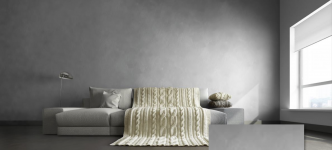Packard said:
Several sites mention the need for the paint to breath, while other sites completely ignore that issue.
Reddit says any paint if the walls don’t leak.
Garage Journal says any paint over Drylock.
The Spruce agrees with the above.
Phoenix Block recommends acrylic, but their audience is desert dwellers.
https://www.google.com/search?q=pai...terior&ie=utf-8&oe=utf-8&client=firefox-b-1-m
This would do for a whole book /many are out on this topic, is like two-three courses at a uni for proper understanding the physics, water "management" is like 1/2 of house building know-how after all/.
So I will try to be as concise as possible:
---
Several sites mention the need for the paint to breath, while other sites completely ignore that issue.
Ignore any site or a person that ignores this. Simple as that. There are situations where "closing" the wall from the inside *in a basement* is OK-ish. But that is the exception, not the rule. So anyone who ignores the topic is either clueless or has an agenda. By "ignoring" I do not mean a local fella who is aware of the ground moisture situation in your house location and *knows* it is a non-issue with your house design to close the walls. That is not ignoring.
Reddit says any paint if the walls don’t leak.
See above.
Garage Journal says any paint over Drylock.
See above.
Though there are two questions in one answered there:
a) will paint stick to Drylock (and similar) => yes, it will, plus,
once you closed the wall, anything you put above makes no difference to the wall .. so stating that once Drylock is in, anything goes, is technically correct
b) will the closing of the wall damage the building, cause molds, etc. => it depends, see first point, what is importat is that
from the *current* state of the wall you cannot guess if closing it will be OKish or not, the only way to know would be if you built the house, i.e. have intimate knowledge of the moisture "model" of it. But then you would not be asking .. *)
The Spruce agrees with the above.
per GJ comment
Phoenix Block recommends acrylic, but their audience is desert dwellers.
This is a very good point ref. the Phoenix climate.
*) if someone did *not* paint the basement walls it may be because of cost savings, or it could be precisely to let them breathe, or it could be simply that the builder had no clue and just stuck to "how it was done always" .. over here tons of houses built like that in the 60-80s were recently closed up by insulating, causing almost an epidemic of "renovated" but moldy and damp houses .. that were fine before the renovations.
---------
In a summary.
If you paint an externally sealed basement, or a basement where the soil is super-dry with a water-permeable paint, nothing bad will happen.
If you paint a wall that relies on being "open" to "exhale" any moisture that gets into it with something that closes it up, you can face major issues.
Hence the universal advice is to not play the poker game and just stick to the safe option. These days you can get piles of great water-permeable paints unlike 100 yrs ago when raw lime was it.
The only exception is if you plan a bathroom - in that case you do need to seal the walls to prevent the moisture it generates getting into the wall. But that is a pretty special case.

